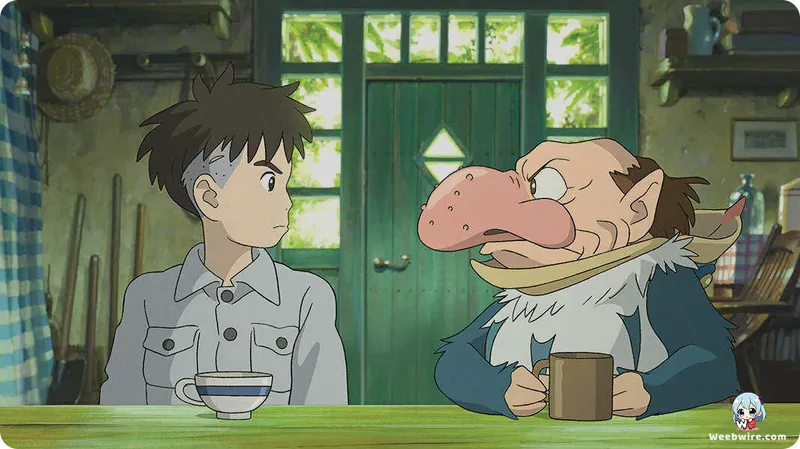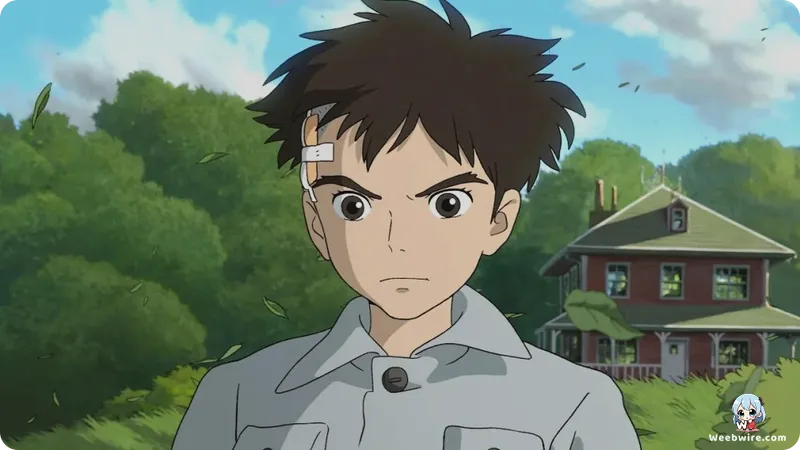Studio Ghibli's 'The Boy and the Heron' Unveils a Hand-Drawn Masterpiece Shrouded in Mystery

In a cinematic landscape often dominated by extensive pre-release marketing and exhaustive promotional campaigns, Studio Ghibli’s The Boy and the Heron (known in Japan as How Do You Live?) emerged as a singular phenomenon. Rather than relying on a flurry of trailers or plot reveals, this profound animated feature captivated global audiences through an unprecedented veil of secrecy. This audacious strategy, masterfully orchestrated by veteran producer Toshio Suzuki, marked a radical departure from conventional film promotion, inviting viewers to experience Hayao Miyazaki’s latest magnum opus with a truly unblemished perspective. This daring approach underscored Ghibli’s profound confidence in their artistry and Miyazaki’s unparalleled vision, allowing the film's narrative depth and breathtaking visuals to resonate purely on their own merit upon its highly anticipated debut.
A Personal Odyssey: Miyazaki's Reflection
At its core, The Boy and the Heron unfolds as a deeply personal and introspective narrative, widely interpreted as Miyazaki’s poignant reflection on his own life, enduring legacy, and the profound themes that have consistently permeated his illustrious career. While initial speculation suggested a direct adaptation of Genzaburo Yoshino's revered 1937 novel, How Do You Live?, the film is, in fact, an original story meticulously crafted by Miyazaki himself, albeit profoundly inspired by Yoshino's philosophical masterwork. The novel, a cornerstone of Japanese literature, delves into universal themes of morality, friendship, and the intricate journey of self-discovery through the eyes of a young boy. Miyazaki's deep reverence for this book is evident; he reportedly gifted it to his grandson, underscoring its significant personal resonance. The film subtly acknowledges this powerful inspiration, with its protagonist, Mahito, notably discovering and reading the very same novel within the narrative, forging a beautiful meta-textual connection between source and creation.
The Artistry of Hand-Drawn Animation
The animation itself stands as a magnificent triumph, a powerful rebuttal to the increasing reliance on digital techniques prevalent in contemporary cinema. The Boy and the Heron proudly upholds the esteemed tradition of hand-drawn animation, a cherished hallmark of Studio Ghibli's unwavering artistic integrity. The film's staggering seven-year production timeline vividly illustrates the meticulous attention to detail and the sheer volume of frames painstakingly brought to life by dedicated human hands. This profound commitment to classical artistry imbues every scene with a remarkable sense of depth, rich texture, and fluid motion that CGI often struggles to replicate, ensuring each frame is a singular work of art and a powerful reaffirmation of the timeless beauty inherent in traditional animation techniques.

Enigmatic Guides and Unsettling Foes
Central to Mahito’s ethereal odyssey is the enigmatic Grey Heron, a character that transcends mere companionship to embody a complex, shapeshifting guide and a mischievous trickster. Far more than a simple avian presence, this creature assumes multiple roles a harbinger of destiny, a playful provocateur, and perhaps even a symbolic manifestation of Mahito's own subconscious. Its constantly fluid appearance, transitioning from a majestic bird to a grotesque, human-like figure, symbolizes the mutable nature of truth and the often-deceptive path to self-discovery within the fantastical realm. The Heron’s interactions with Mahito are frequently charged with tension and ambiguity, compelling the young protagonist to question his perceptions and the very fabric of reality, serving as a quintessential Ghibli element where the mundane seamlessly intertwines with the magical.
Adding an unexpected layer of surrealism and dark humor are the surprisingly menacing parakeets. Initially appearing as charming inhabitants of the fantastical world Mahito discovers, these vibrant green birds are soon revealed to be part of a highly organized, almost cult-like society with a rather unsettling predilection for human flesh. Their colossal and formidable king introduces a unique element of whimsical horror, brilliantly showcasing Miyazaki’s masterful ability to infuse dark, satirical undertones into his otherwise wondrous narratives. The parakeets serve as a darkly comedic counterpoint to the film’s more profound themes, subtly reminding audiences that even within the most exquisitely crafted dreamscapes, unsettling truths can lurk just beneath the surface.
Beyond the Personal: Broader Societal Themes
The film's profound thematic scope extends beyond personal grief and emotional growth, embracing broader societal commentaries. Miyazaki deftly weaves in reflections on the devastating impact of war, environmental degradation, and the cyclical nature of creation and destruction, echoing concerns he has passionately explored throughout his illustrious career. The decaying tower and the parallel world it encompasses can be interpreted as powerful metaphors for the fragile balance of both nature and humanity, perpetually poised on the brink of either collapse or renewal. The narrative gently encourages viewers to contemplate their own place in the world and the enduring legacy they aspire to leave behind, positioning The Boy and the Heron not merely as a visual spectacle but as a deeply contemplative experience that resonates long after the credits have rolled.
A Stellar International Voice Cast
For its international release, The Boy and the Heron assembled an exceptional English voice cast, a clear testament to the film's universal artistic appeal and the profound reverence held for Studio Ghibli. Acclaimed actors such as Christian Bale, reprising his collaboration with Miyazaki after voicing Howl in Howl's Moving Castle, lent his talent alongside a star-studded ensemble including Robert Pattinson, Florence Pugh, Mark Hamill, Willem Dafoe, and Dave Bautista, among others. This remarkable cast, many of whom are openly ardent admirers of Miyazaki's unparalleled work, imbued the characters with new dimensions, effectively introducing the film to a wider global audience while meticulously preserving the integrity and spirit of the original Japanese performances.
The Soulful Score of Joe Hisaishi
Complementing Miyazaki’s unparalleled visuals is the hauntingly beautiful and evocative score crafted by his long-time collaborator, Joe Hisaishi. Hisaishi’s compositions are as intrinsic to the quintessential Ghibli experience as the animation itself, and for The Boy and the Heron, his music once again masterfully weaves a rich tapestry of emotion, expertly guiding the audience through moments of pure wonder, profound sorrow, and escalating tension with effortless grace. The score often feels minimalist yet possesses an incredibly powerful impact, allowing the visuals and narrative ample space to breathe while subtly elevating the emotional resonance of each scene. Hisaishi’s extraordinary ability to conjure a sense of timelessness and ethereal beauty through his melodies further solidifies the film's rightful place as a modern classic.
A Timeless Legacy
Ultimately, The Boy and the Heron stands as a powerful testament to Hayao Miyazaki’s enduring genius and Studio Ghibli’s unwavering commitment to artistic purity. It is a film that defies easy categorization, a dreamlike odyssey that invites myriad interpretations, and a profound exploration of what it truly means to live, grieve, and discover beauty amidst chaos. Its groundbreaking release strategy, deep personal inspirations, unparalleled traditional animation mastery, and rich symbolic tapestry collectively forge an extraordinary cinematic experience, a true jewel in the crown of animated storytelling that continues to unveil new layers with each viewing. It is a film crafted not for fleeting immediate consumption, but for lasting contemplation a final, magnificent gift from a master storyteller.
Credits
The Boy and the Heron
Author
Hayao Miyazaki
Cover Art
Hayao Miyazaki
Studio
Studio Ghibli
Publisher
Studio Ghibli
Producers





